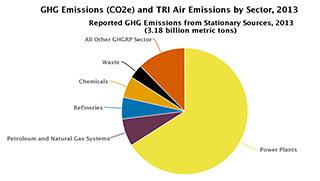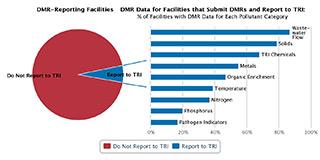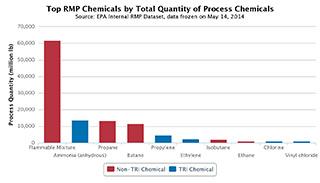2013 TRI National Analysis: TRI & Beyond
TRI is a powerful resource that provides the public with information about how toxic chemicals are managed by industrial facilities in the United States. However, there are many other programs at EPA that collect information about chemicals and our environment.
The next figure is an overview of the laws that EPA carries out and the industrial processes they regulate. While many programs at EPA focus on one area, TRI covers releases to air, water, and land; waste transfers; and waste management activities. Therefore, TRI data are especially valuable, as they can be combined with many other datasets to provide a more complete picture of national trends in chemical use, management and releases.
This chapter highlights three thematic areas that combine TRI with other data sources:
- Climate Change:
- A comparison of TRI data and EPA's Greenhouse Gas Reporting Program (GHGRP) data collected under the Clean Air Act (CAA);
- A comparison of TRI and GHG waste rates for different fuels using data from the Department of Energy's Energy Information Administration and
- A look at projected sea level rise in the United States relative to TRI facility locations using National Oceanic and Atmospheric Administration (NOAA) data.
- Surface Water:
- An analysis of TRI and EPA's Discharge Monitoring Report (DMR) data collected under the Clean Water Act (CWA).
- Chemical Safety:
- An analysis of TRI and emergency planning data collected under the Clean Air Act (CAA), including Risk Management Plans (RMPs), and other sections of the Emergency Planning and Community Right-to-Know Act (EPCRA).
| Sections in this chapter | |
|---|---|
| Comparing TRI and Greenhouse Gas Emissions |
Regulating Chemical Releases to Water |
| Chemical Safety and Emergency Planning |
|
This page was published in January 2015 and uses the 2013 TRI National Analysis dataset made public in TRI Explorer in October 2014.




